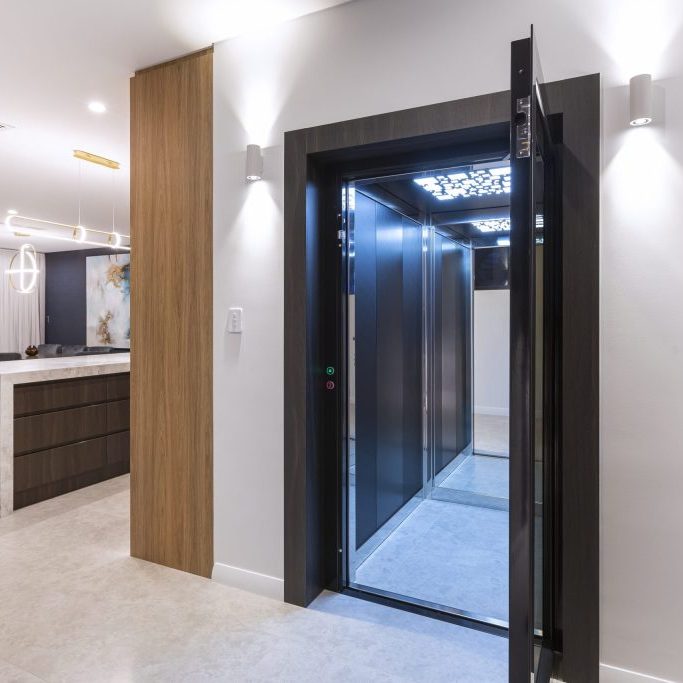We Maintain Lifts to the Greatest Specifications: Reliable Solution for All Lift Kind
We Maintain Lifts to the Greatest Specifications: Reliable Solution for All Lift Kind
Blog Article
Exploring the World of Lifts: Typical Problems Dealt With by Different Lift Mechanisms
As we navigate with the vertical transportation systems of contemporary buildings, elevators attract attention as an important element of our lives. However, behind their seamless operation exists a world of detailed systems that can often encounter difficulties. From hydraulic lifts to traction systems and machine-room-less designs, each lift type comes with its collection of common concerns. Comprehending these obstacles is important for ensuring the smooth functioning of these crucial systems. Allow's discover the intricacies that underlie the operation of lifts and the possible issues that can develop, clarifying the intricate web of lift systems.
Hydraulic Elevators
Hydraulic lifts, frequently favored for low-rise buildings, utilize fluid stress to manage the movement of the elevator cars and truck (lift repair companies). This mechanism involves a hydraulic pump pressing oil right into a cyndrical tube, triggering the lift to relocate in the desired instructions. While hydraulic lifts are recognized for their quiet and smooth operation, they do feature their very own set of typical concerns
One prevalent problem with hydraulic elevators is oil leak. The seals in the hydraulic system can use out over time, resulting in oil seepage. This not just creates a mess however can also influence the elevator's efficiency if left unaddressed. In addition, problems with the control system, such as damaged valves or a malfunctioning pump, can trigger disruptions in the lift's motion.
Routine maintenance and punctual repair work are vital to make sure the smooth functioning of hydraulic elevators. By resolving these usual problems proactively, structure proprietors can reduce downtime and ensure the safety and performance of their vertical transportation system.
Grip Elevators
When considering upright transport systems in buildings, another usual type aside from hydraulic elevators is the traction lift. Traction elevators operate using a system of ropes and counterweights that relocate the elevator cars and truck by grasping onto the hoist ropes. This system allows for smoother and much faster vertical transportation contrasted to hydraulic systems.
Among the typical issues dealt with by traction elevators is rope wear. The consistent motion of the ropes within the grip system can result in tear and use in time, potentially triggering the lift to malfunction or come to be unsafe for usage. Normal examinations and upkeep of the ropes are important to ensure the lift's appropriate performance and safety.
An additional problem that traction elevators may come across is connected to the control system. Troubles with the control system can result in problems such as erratic motion, hold-ups in response times, or even complete closures. Routine testing and maintenance of the control system are crucial to stop such concerns and ensure the elevator's integrity.
Machine-Room-Less (MRL) Elevators

One of the essential components of MRL lifts is the small gearless traction equipment that is set up within the hoistway. This machine successfully drives the elevator vehicle without the demand for large equipment located in standard traction lifts. Furthermore, MRL elevators generally make use of a counterweight system to stabilize the cars and truck, further boosting their energy performance.
Despite their benefits, MRL lifts might face difficulties associated with repair and maintenance as a result of the confined space for devices installment. Accessibility for servicing components within the shaft can be restricted, calling for specialized training for service technicians. Correct maintenance schedules and routine assessments are crucial to guarantee the continued smooth operation of MRL elevators.
Overloading and Weight Limitation Issues
Are lifts furnished to take care of excess weight loads successfully and safely? Overwhelming and weight limitation problems are crucial concerns in lift operations. Elevator producers design lifts with particular weight capabilities to make sure traveler security and devices durability. Surpassing these weight limitations can cause different issues, including mechanical failings, delays, and safety and security threats.
When elevators are overloaded, it puts too much pressure on the motor, cable televisions, and other components, potentially creating breakdowns or malfunctions. Safety and security devices such as sensors and overload sensors are in area to avoid elevators from relocating if they identify excess weight. Furthermore, exceeding weight restrictions can cause increased explanation power usage and wear and tear on the lift system.
To alleviate overloading concerns, developing managers ought to plainly show weight limitations in elevators and enlighten residents on the importance of adhering to these limitations site web - lift repair companies. Regular upkeep checks by qualified technicians can likewise aid guarantee that lifts are running within risk-free weight criteria. By dealing with overloading and weight restriction issues proactively, building proprietors can boost elevator security and performance
Electrical System Failures
Exceeding weight limitations in elevators can not only lead to mechanical issues but also potentially contribute to electrical system failings within the lift infrastructure. Electric system failings are a vital problem in lift procedure, as they can create unanticipated shutdowns, breakdowns, or even safety risks.
Routine upkeep and inspections are essential to identify and address prospective electrical problems promptly, making sure the safe and reliable operation of elevator systems. By sticking to weight limits and performing routine electrical system checks, structure owners can reduce the threat of electrical failings in elevators.
Final Thought

Hydraulic elevators, frequently chosen for low-rise structures, utilize fluid pressure to manage the movement of the elevator car.When taking into consideration upright transportation systems in structures, an additional common type apart from hydraulic elevators is the traction lift. Traction elevators operate making use of a system of ropes and weights that relocate the elevator auto by grasping onto the hoist ropes. Unlike traditional elevators that require a different machine room to house the tools, MRL elevators integrate many of the components within the shaft, eliminating the demand for a devoted machine room.In final thought, lifts encounter usual issues such as hydraulic breakdowns, grip system failures, and electrical system problems.
Report this page